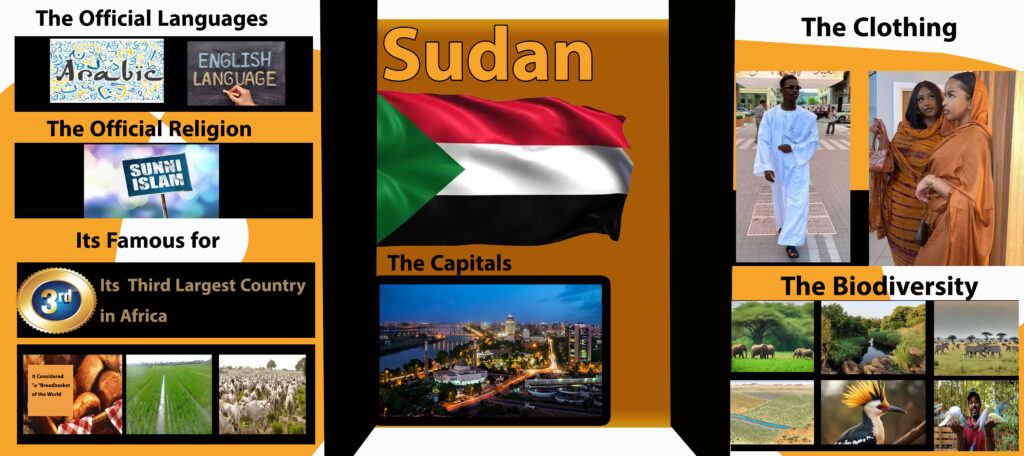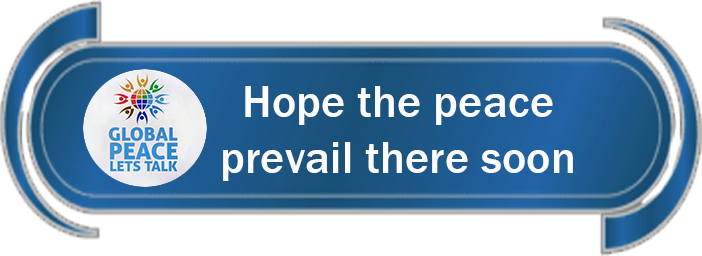
Some Points to Consider in Sudan and South Sudan
1- Sudan is the third largest country in Africa
occupying an area of approximately 1,886,068 square kilometers.
2- South Sudan is one of the least developed and poorest countries globally
The central African country usually ranks very low on the Human Development Index
3- Sudan is often considered a “breadbasket” of the world
due to its vast agricultural potential and rich natural resources.
4- The country is the largest agricultural producer in Africa and the Middle East
with fertile land and access to the Nile River, which supports its food production.
5- Sudan’s arable land is estimated to be 170 million acres
making it a significant player in global food security.
6- The United Nations Food and Agriculture Organization (FAO) has recognized
Sudan’s potential as a future breadbasket, emphasizing its role in addressing food security needs in the region and beyond.
7- Despite facing political challenges (severe famine) Sudan’s agricultural
output and livestock farming capabilities are seen as vital for regional and global food security, overall, Sudan’s agricultural sector is viewed as a key component in addressing food shortages and contributing to global food security.
Before we go into details, must have a look about historical background, why Sudan are two countries?
The historical backgrounds During the nineteenth century and until Sudan’s independence from this dual rule in 1956, The region was subject to Egyptian rule during the Muhammad Ali dynasty, and later to the Anglo-Egyptian Condominium, an agreement under which Sudan was administered jointly by Egypt and the United Kingdom. This period lasted, the reason of divided the South from the North is still until this day because of: The disparities in political, economic, and social development between the northern and southern parts of Sudan fueled ongoing tensions, The First Sudanese Civil War broke out in 1955 A year before independence and lasted until 1972. This conflict ended with the establishment of the Autonomous Region of Southern Sudan.
In 1983
The Autonomous Region of Sudan was dissolved after the outbreak of the Second Sudanese Civil War. the Sudanese conflict continued until 2005 Ending with the signing of the Comprehensive Peace Agreement (CPA). This agreement granted South Sudan renewed autonomy and paved the way for its eventual independence.
In a January 2011
referendum an overwhelming 98.8% of the population of the south voted to secede from Sudan. This decision was primarily motivated by long-standing grievances related to religious and ethnic marginalization, and disputes over natural resources such as oil. South Sudan formally declared its independence on July 9, 2011, amidst much celebration and challenge.
Now, Let’s talk about SUDAN
The Capital: Khartoum
Khartoum is the capital city of Sudan and the largest urban area in the country.
It’s Located at: Northeastern Africa
Sudan is located in northeastern Africa. It is bordered by Egypt to the north, the Red Sea to the northeast, Eritrea and Ethiopia to the east, South Sudan to the south, the Central African Republic to the southwest, Chad to the west, and Libya to the northwest.
The Population
50.47 million people
The Official language
Sudan has two official languages namely literary Arabic and English. The number of languages indigenous to Sudan is estimated at 114 while there are over 500 accents in the country.
The Official Religion
The official religion in Sudan is Islam, with approximately 90-97% of the population identifying as Muslim, practiced by around 90.7% to 97% of the population, depending on the source. The majority of Sudanese Muslims adhere to Sunni Islam, with a significant number following the Maliki school of thought. There are also smaller communities of Shia Muslims, primarily in urban areas like Khartoum, Other Religions, While Islam is the official religion, there are minority faiths present in Sudan. Christianity is the largest minority religion, accounting for about 5.4% of the population, with various denominations represented. Additionally, some traditional African religions are practiced, particularly in specific regions like the Nuba Mountains.
The Biodiversity;
6,000 plant species and 720 animal species
Sudan’s biodiversity is a testament to its rich and varied landscapes, from the arid Sahara Desert in the north to the lush equatorial rainforests in the south. The country is home to over 6,000 plant species and 720 animal species, making it a biodiversity hotspot. However, Sudan faces numerous conservation challenges, including:
Civil unrest
The drought
The Fires
Over-grazing
Unsustainable use of natural resources
Efforts are being made to preserve and protect Sudan’s biodiversity, which is crucial for the long-term survival of unique species and the sustainability of its ecosystems.
The Climate
Sudan has a predominantly desert climate, characterized by high temperatures and low rainfall, with significant regional variations from the arid north to the more humid south. It’s dominated by the Sahara Desert, leading to extremely dry conditions with very little rainfall. The climate is classified as “BWh” (Tropical and Subtropical Desert Climate) according to the Köppen climate classification.
The Temperature
Average temperatures in Sudan are consistently high, often exceeding 40°C (104°F) during the summer months (May to September). In the winter months (November to February), temperatures are milder, ranging from 15°C (59°F) to 27°C (80.6°F).
The Clothing
Sudanese clothing is characterized by a rich diversity of traditional and modern attire, influenced by factors such as religion, climate, and social status, Clothing styles often reflect regional variations and personal identity, showcasing a blend of Arab and African influences.
Traditional garments include
the jalabiya for men and the toob for women, which are significant in Sudanese culture.
Most Sudanese people wear a
combination of traditional and modern clothing, adapting their choices to different social settings.
The Economy
Sudan’s economy is currently facing significant challenges due to ongoing conflict, leading to severe contractions in GDP, high inflation, and rising poverty levels. The GDP Contraction: Sudan’s economy has experienced a dramatic contraction, with real GDP estimated to have shrunk by 29.4% in 2023 and a further 14% in 2024. This decline is attributed to the destruction of infrastructure, particularly in Khartoum, and widespread displacement of the population due to conflict
The Inflation
Inflation surged to 170% year-on-year in 2024, driven by supply chain disruptions and rising costs for essential goods. However, it has shown signs of deceleration, dropping to 78.4% in July 2025 as housing and food prices began to stabilize.
The Poverty Levels
The percentage of the population living in extreme poverty has increased from 23% to 59% between 2022 and 2024, highlighting the severe impact of economic instability on households.
Sudan has a Famine since 2023
Sudan is currently facing one of the world’s most severe humanitarian crises, with millions pushed to the “brink of survival.” The UN and local partners are working together to help families rebuild with food, nutrition, school meals, and other essential services. The situation remains critical, with over 30 million people in need of humanitarian assistance, including 9.6 million displaced from their homes and nearly 15 million children caught in a struggle for daily survival. The UN and other agencies have issued a joint humanitarian call to action, appealing for immediate international attention to address the immense suffering and growing dangers confronting millions across Sudan.
The Agriculture and Oil
The economy is heavily reliant on agriculture and oil exports, with agriculture employing about 80% of the workforce and contributing significantly to GDP. Oil exports began in 1999, and the sector remains crucial for revenue.
The Manufacturing and Services
The manufacturing sector and services, including healthcare and education, have also been adversely affected by the ongoing conflict, leading to a decline in economic activity, The education system in Sudan is at a critical juncture, with significant efforts needed to address the challenges of access, quality, and gender disparities. Continued support from international organizations and the government is essential to ensure that all children in Sudan have the opportunity to receive a quality education and contribute to the nation’s development.
Recovery Potential
There are early signs of economic recovery in mid-2025, supported by the return of internally displaced people and government efforts to reestablish services in urban areas. However, the recovery is expected to be slow due to damaged infrastructure and limited resources.
Water Scarcity in Sudan
Sudan’s water share is not sufficient for agriculture, as agriculture accounts for 80% of the country’s water use. The demand for water is increasing, but its availability remains low, leading to significant challenges for rural communities. Additionally, the country faces issues with water scarcity, which affects irrigation and agricultural productivity. Sustainable management of water resources is essential to address these challenges and ensure the long-term viability of agriculture in Sudan.
The Peace and Security in Sudan
The Conflict Since 2023
Today, the Council approved conclusions strongly condemning the ongoing conflict in Sudan, that has been causing the loss of thousands of lives and immense hardship for the Sudanese people since 2023 poses a serious threat to stability and security across the wider region.




